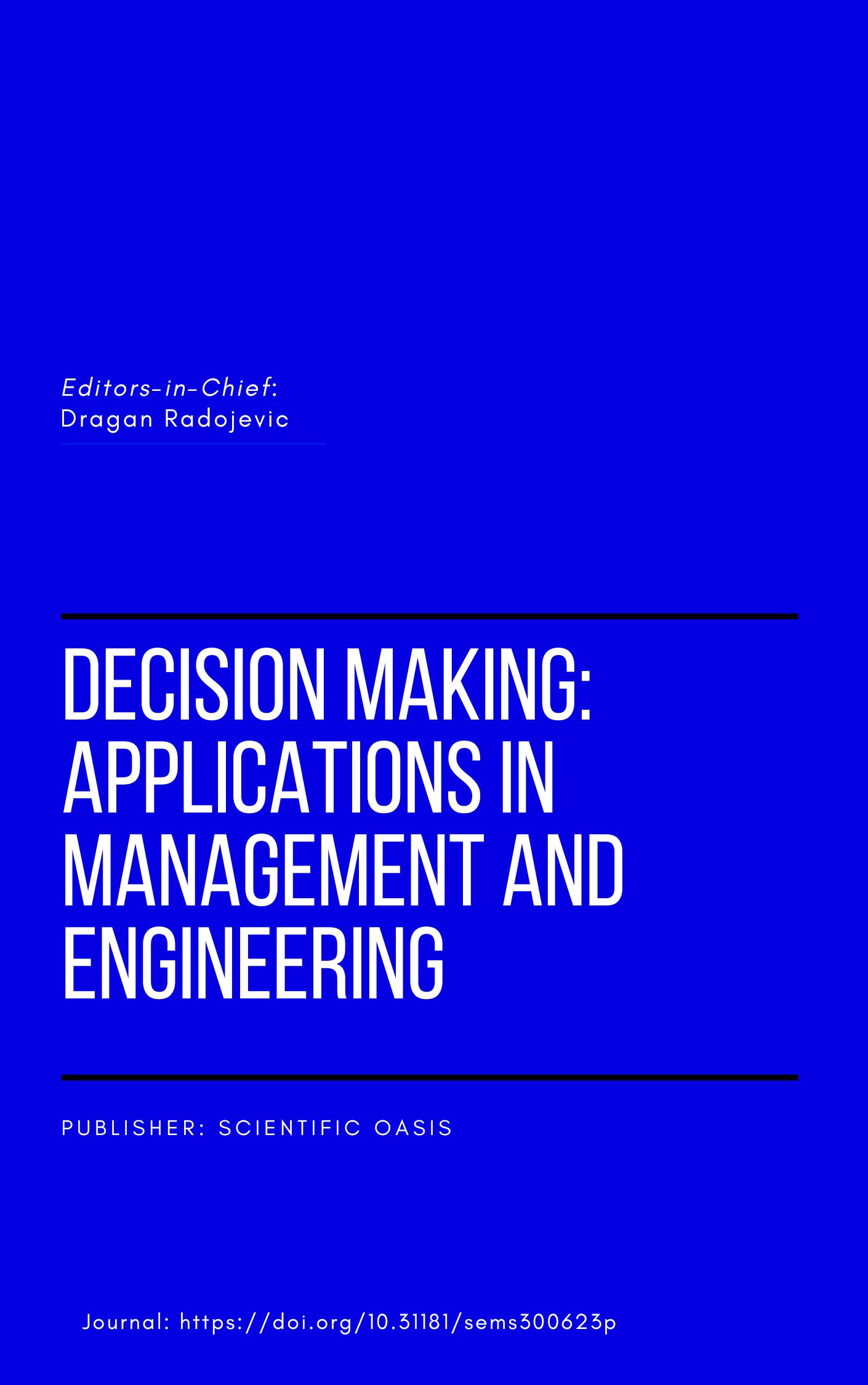Optimizing University Teaching Methods Using Algebraic Techniques in a Complex Fermatean Environment
DOI:
https://doi.org/10.31181/dmame7220241345Keywords:
Classroom Management; CIVFFS, Algebraic Techniques; Decision-Making ProcessAbstract
In a university classroom, students exhibit varying levels of engagement, posing challenges for professors in delivering instruction effectively. While some students are highly engaged, others may struggle to keep pace, creating a demanding environment for the professor to manage while ensuring comprehensive learning. Consequently, the professor faces two primary options: either disregarding students with differing engagement levels or adopting an alternative teaching approach. An effective professor adapts their teaching methodology according to student engagement; however, determining the most suitable approach for the majority of students within a class is a complex task. The selection of an appropriate teaching mode is further complicated by various uncertain factors. This study seeks to develop a structured approach for selecting classroom teaching modes based on diverse levels of student engagement while considering multiple influencing factors. To achieve this, a novel model is introduced, namely the complex interval-valued Fermatean fuzzy set (CIVFFS), which integrates the characteristics of the complex Fermatean fuzzy set (CFFS) and the interval-valued Fermatean fuzzy set (IVFFS). The CIVFFS plays a crucial role in addressing the uncertain and incomplete information associated with various factors affecting classroom teaching methods. Four methods are proposed based on algebraic t-norms and t-conorms, namely the complex interval-valued Fermatean fuzzy weighted averaging (CIVFFWA) operator, the complex interval-valued Fermatean fuzzy ordered weighted averaging (CIVFFOWA) operator, the complex interval-valued Fermatean fuzzy weighted geometric (CIVFFWG) operator, and the complex interval-valued Fermatean fuzzy ordered weighted geometric (CIVFFOWG) operator, along with their respective properties. The proposed approach enables an evaluation of its effectiveness across different scenarios. An illustrative example is provided to demonstrate the practicality and reliability of the model and methods, highlighting their applicability in real-world contexts.
Downloads
References
[1] Zadeh, L.A. (1965). Fuzzy sets. Information and control, 8(3), 338-353. https://doi.org/10.1016/S0019-9958(65)90241-X
[2] Atanassov, K.T. (1986). Intuitionistic fuzzy sets. Fuzzy Sets and Systems, 20(1), 87-96. https://doi.org/10.1016/S0165-0114(86)80034-3
[3] Seikh, M. R., & Mandal, U. (2021). Intuitionistic fuzzy Dombi aggregation operators and their application to multiple attribute decision-making. Granular Computing, 6, 473-488. https://doi.org/10.1007/s41066-019-00209-y
[4] Xu, Z. and R.R. Yager. (2006). Some geometric aggregation operators based on intuitionistic fuzzy sets. International journal of general systems, 35(4), 417-433. https://doi.org/10.1080/03081070600574353
[5] Wang, W. and X. Liu. (2011). Intuitionistic fuzzy geometric aggregation operators based on Einstein operations. International journal of intelligent systems, 26(11), 1049-1075. https://doi.org/10.1002/int.20498
[6] Kumar, K., & Chen, S. M. (2022). Group decision making based on advanced intuitionistic fuzzy weighted Heronian mean aggregation operator of intuitionistic fuzzy values. Information Sciences, 601, 306-322. https://doi.org/10.1016/j.ins.2022.04.001
[7] Huang, J.-Y. (2014). Intuitionistic fuzzy Hamacher aggregation operators and their application to multiple attribute decision making. Journal of Intelligent & Fuzzy Systems, 27(1), 505-513. https://doi.org/10.3233/IFS-131019
[8] Atanassov, K.T. and K.T. Atanassov, Interval valued intuitionistic fuzzy sets. 1999: Springer. https://doi.org/10.1007/978-3-7908-1870-3_2
[9] Yager, R.R. (2013). Pythagorean membership grades in multicriteria decision making. IEEE Transactions on fuzzy systems, 22(4), 958-965. https://doi.org/10.1109/TFUZZ.2013.2278989
[10] Khan, A. A., Ashraf, S., Abdullah, S., Qiyas, M., Luo, J., & Khan, S. U. (2019). Pythagorean fuzzy Dombi aggregation operators and their application in decision support system. Symmetry, 11(3), 383. https://doi.org/10.3390/sym11030383
[11] Akram, M., Peng, X., & Sattar, A. (2021). Multi-criteria decision-making model using complex Pythagorean fuzzy Yager aggregation operators. Arabian Journal for Science and Engineering, 46, 1691-1717. https://doi.org/10.1007/s13369-020-04864-1
[12] Peng, X. and Y. Yang. (2016). Fundamental properties of interval‐valued Pythagorean fuzzy aggregation operators. International journal of intelligent systems, 31(5), 444-487. https://doi.org/10.1002/int.21790
[13] Yang, Z., & Chang, J. (2020). Interval-valued Pythagorean normal fuzzy information aggregation operators for multi-attribute decision making. IEEE Access, 8, 51295-51314. http://doi.org/10.1109/ACCESS.2020.2978976
[14] Verma, R., & Agarwal, N. (2022). Multiple attribute group decision-making based on generalized aggregation operators under linguistic interval-valued Pythagorean fuzzy environment. Granular Computing, 7(3), 591-632. https://doi.org/10.1007/s41066-021-00286-y
[15] Senapati, T. and R.R. Yager. (2020). Fermatean fuzzy sets. Journal of ambient intelligence and humanized computing, 11, 663-674. https://doi.org/10.1007/s12652-019-01377-0
[16] Aydemir, S.B. and S. Yilmaz Gunduz. (2020). Fermatean fuzzy TOPSIS method with Dombi aggregation operators and its application in multi-criteria decision making. Journal of Intelligent & Fuzzy Systems, 39(1), 851-869. https://doi.org/10.3233/JIFS-191763
[17] Jeevaraj, S. (2021). Ordering of interval-valued Fermatean fuzzy sets and its applications. Expert Systems with Applications, 185, 115613. https://doi.org/10.1016/j.eswa.2021.115613
[18] Köseoğlu, A., Altun, F., & Şahin, R. (2024). Aggregation operators of complex fuzzy Z-number sets and their applications in multi-criteria decision making. Complex & Intelligent Systems, 10(5), 6559-6579. https://doi.org/10.1007/s40747-024-01450-y
[19] Alkouri, A.S. and A.R. Salleh. Complex intuitionistic fuzzy sets. in AIP conference proceedings. 2012. American Institute of Physics. https://doi.org/10.1063/1.4757515
[20] Ma, J., G. Zhang, and J. Lu. (2011). A method for multiple periodic factor prediction problems using complex fuzzy sets. IEEE Transactions on Fuzzy Systems, 20(1), 32-45. https://doi.org/10.1109/TFUZZ.2011.2164084
[21] Hu, B., L. Bi, and S. Dai. (2019). Complex Fuzzy Power Aggregation Operators. Mathematical Problems in Engineering, 2019, 1-7. https://doi.org/10.1155/2019/9064385
[22] Jia, X., & Wang, Y. (2022). Choquet integral-based intuitionistic fuzzy arithmetic aggregation operators in multi-criteria decision-making. Expert Systems with Applications, 191, 116242. https://doi.org/10.1016/j.eswa.2021.116242
[23] Muneeza, & Abdullah, S. (2020). Multicriteria group decision-making for supplier selection based on intuitionistic cubic fuzzy aggregation operators. International Journal of Fuzzy Systems, 22, 810-823. https://doi.org/10.1007/s40815-019-00768-x
[24] Ohlan, A. (2022). Novel entropy and distance measures for interval-valued intuitionistic fuzzy sets with application in multi-criteria group decision-making. International Journal of General Systems, 51(4), 413-440. https://doi.org/10.1080/03081079.2022.2036138
[25] Ullah, K., et al. (2020). On some distance measures of complex Pythagorean fuzzy sets and their applications in pattern recognition. Complex & Intelligent Systems, 6, 15-27. https://doi.org/10.1007/s40747-019-0103-6
[26] Mahato, P., Mahato, S. K., & Das, S. (2024). COVID-19 Outbreak with Fuzzy Uncertainties: A Mathematical Perspective. Journal of Computational and Cognitive Engineering, 3(1), 43-57. https://doi.org/10.47852/bonviewJCCE2202236
[27] Hezam, I.M., et al. (2023). Geometric aggregation operators for solving multicriteria group decision-making problems based on complex pythagorean fuzzy sets. Symmetry, 15(4), 826. https://doi.org/10.3390/sym15040826
[28] Shakeel, M., & Abdullah, S. (2019). Some induced interval-valued Pythagorean trapezoidal fuzzy averaging aggregation operators based on Einstein operations and their application in group decision-making. Computational and Applied Mathematics, 38, 1-20. https://doi.org/10.1007/s40314-019-0858-9
[29] Dutta, P., & Borah, G. (2023). Construction of hyperbolic fuzzy set and its applications in diverse COVID-19 associated problems. New Mathematics and Natural Computation, 19(01), 217-288. https://doi.org/10.1142/S1793005723500072
[30] Chinnadurai, V., S. Thayalan, and A. Bobin. (2021). Some operations of complex interval-valued Pythagorean fuzzy set and its application. Communications in Mathematics and Applications, 12(3), 483. http://doi.org/10.26713/cma.v12i3.1525
[31] Rahman, K., R. Ali, and T. Lamoudan. (2024). Complex Fermatean fuzzy geometric aggregation operators and their application on group decision-making problem based on Einstein T-norm and T-conorm. Soft Computing, 28(17), 9203-9224. https://doi.org/10.1007/s00500-024-09804-x
Downloads
Published
How to Cite
Issue
Section
License
Copyright (c) 2025 Decision Making: Applications in Management and Engineering

This work is licensed under a Creative Commons Attribution 4.0 International License.












